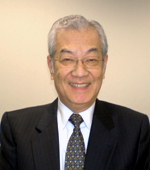

Keisuke Egashira, Director, Daimler Foundation in Japan
Akiko Hida, NPO Arts Initiative Tokyo (AIT)
Interviewer: Sachiko Kanno, The Japan Foundation
Akemi Tsukada, NLI Research Institute
The Daimler Foundation in Japan funds the Art Scope, an artist-in-residence program, as part of their corporate scheme to support arts and culture. It is an exchange program in which young artists from Germany and Japan visit the other country; the Japanese take residency in Berlin and the Germans in Tokyo. The program is unique and innovative. It is supported by a corporate entity with a long-term vision since its inception in 1991, and is currently run in collaboration with the Hara Museum and Arts Initiative Tokyo (AIT) in Tokyo.
We interviewed Mr. Keisuke Egashira, the director of Daimler Foundation in Japan about the objective, practices and principles of the Art Scope program.
Art Scope: How it Began
──Could you first tell us how and why you started the Art Scope program?
Egashira──The Daimler group has companies located in 135 countries, including Germany, and advocates for its corporate citizenship in the respective countries and regions. As one of the corporate social responsibility activities run by the company in Japan, Art Scope was initiated in 1991.
The brainchild of this program is Andre´ Francois-Poncet, a former minister of foreign affairs of France and also a board member of Mercedes-Benz Japan at that time. He had profound knowledge in arts and culture and proposed to conduct an artist-in-residence program in Japan. With his cooperation, Japanese artists were invited to a beautiful French village of Monflanquin for three months to produce artworks and exhibit them in Japan upon their return. I would think that an artist-in-residence program was quite an advanced method in Japan at the time.

Keisuke Egashira, Director, Daimler Foundation in Japan
Art Scope: Its Renewal and Crisis-turned-into-Success
──In 2003, the program changed to an exchange program between Berlin and Tokyo.
Egashira──The basic concept of Art Scope program was put under review in 2001.
Now, there are two perspectives to take into consideration for evaluating a program, such as the Art Scope. One is quantity and the other is quality. Art Scope, like other artist support programs, cannot be rated by the volume. To measure its quality, its long term impact on the society as well as its role must be assessed. For the sake of our corporate branding, the social impact and significance are important factors. This thought was advocated and gained understanding within the company upon which we reviewed the activities of the program.
In restarting the program, we decided to follow a new policy:
First, to run the program ourselves instead of outsourcing the services.
Instead of outsourcing exhibition, PR and marketing activities, we decided to take on these tasks ourselves.
Second, to exhibit the artworks as the outcomes of the residency in a museum setting.
In the previous scheme, we could not attract as many audiences as we could, since we could not publicize information as widely as expected, not having a permanent exhibition space. Therefore, we decided to ask Hara Museum to cooperate with us and provide us their gallery space to put on the show. Mr. Hara, the director, shared our interest in supporting young artists, and agreed to collaborate in running this program. We also asked NPO Arts Initiative Tokyo (AIT) to liaise with artists who were being invited to the residency.
Three, to change the location of residency to Berlin, as well as initiate an exchange program where Japanese artists take residency in Berlin and German artists take residency in Japan. We focused on the fact that our corporate headquarter was located in Germany.
This also led us to positioning us in stronger alignment with our corporate headquarters. Luckily, our headquarters has an art division, so we could ask for their assistance. We asked them to select and recommend German artists for this program. We also worked things out so that the exhibition will take place at the contemporary art gallery in the headquarter building, in addition to the one at Hara Museum.
Attaining recognition and support from the headquarters is very important in raising the status of the program as a Mecenat activity.
──When corporate entities decide to support the arts, the program needs to demonstrate its synthesis or affinity with its core business. So it is all the more significant that your program was renewed to be more in alignment with your headquarters in Germany.
Egashira──Yes. It is important that the management side of the company deeply understands the reason for supporting the arts and gets involved in the Mecenat activities.
Corporate Support for the Arts and Culture: Leveraging on the Core Business
Egashira──Daimler has an art collection focused around the work from the 20 century onwards, and there is a permanent exhibition at the contemporary art gallery in Berlin.
Exhibitions that are organized by the corporate headquarters in Germany are always accompanied by educational programs. For the exhibition that was held at the Tokyo Opera City Art Gallery in 2006, “Conversation with Art, on Art,” we published an original workbook entitled “ABC of Art Collection.” We wanted the students at elementary and middle schools in and around metropolitan Tokyo to enjoy this exhibition, so we had events such as gallery cruise and weekend kids’ programs. AIT collaborated with us in planning this exhibition, too.
In inviting schools to participate, I also visited some of them myself and met the principal and/or the teachers in charge of arts and crafts class.
──I am sure the schools appreciated a person in top management position to come and see them.
Egashira──I learned from my visits that there are many teachers who want to bring children to art museums, but their ambitions are hindered by the issue of security when students travel from the school to the museum. So, we solved this issue by providing bus services between the two destinations.
Daimler is the shareholder of Mitsubishi Fuso Truck and Bus Corporation, and I am the chairman of their board. So, I came up with an idea to apply our core business by providing our buses as means of transportation.
In 2008, we will start a pilot program called “Fuso Art Bus” program. We hope that this will make a significant contribution to our society, as it targets children. They are the ones who will make a difference in our future society.
Artist-in-Residence Program and its Impact
──From your experiences in supporting the Art Scope program for many years, what kind of impact does it have on the artists, as well as arts and culture in general?
Egashira──To take residency is to make home of the place. “To take residency” in a location is very different from just “making a visit.” Taking residency should be an experience where an artist is motivated and stimulated in the environment they inhabit.
──I attended the slide lecture of the video artist, Eva Teppe, the other day. She is the participant of the Art Scope program in 2007-2008. She said that she arrived in Japan during the midst of summer and was overwhelmed by the noise of cicadas that filled the streets of Japan. She found them to be attractive and decided to record their images in photography and video. Her experience re-introduces us to the sound and images of the city we take for granted with a fresh perspective.
Egashira──That’s correct. Residency programs are often criticized for their intangibility in measuring its effectiveness. But for the artist, the experiences of an everyday routine in a foreign culture become the very source of inspiration. At the same time, those who take the artists into their community have the chance to broaden their perspectives through artists’ eyes. When an artist takes residency in a location, they provide the base for a cultural exchange.
──In many residency programs, artists are asked to present their works produced during their stay. With the Art Scope program, the same requirement applies, but you allow quite a long time before the artists make their presentations. I believe this scheduling comes from standing on the artist’s side.
Egashira──Some artists prefer to use equipment and tools with which they are familiar. Also, working on an exhibition together with other artists encourages exchange of ideas while taking inspiration from each other. Eva Teppe brought many ideas and materials home from Japan. I am looking forward to the exhibition at the Hara Museum next year.
──Thank you.
[October 26, 2007 at Conference Room, Mercedez-Benz, Japan]
2024.7.9Acasă la Hundorf Residency JournalArtist : Miyake Suzuko
2023.5.14AIR and I, 09 : Mentoring Artists for Women’s Art (MAWA) Residence Report